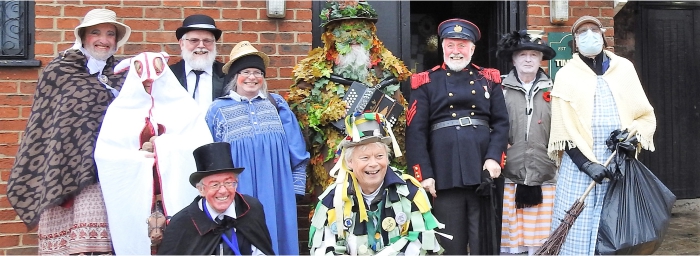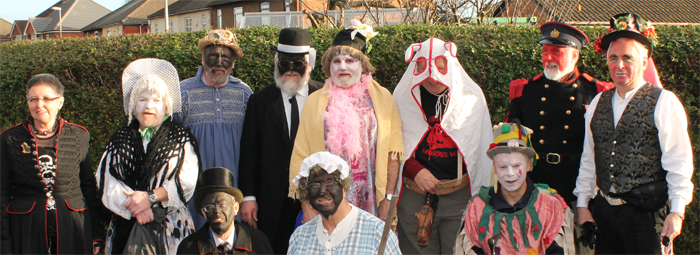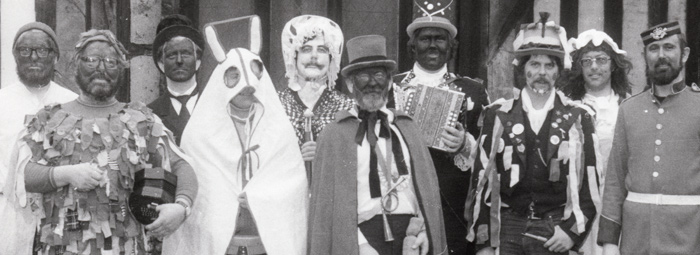The History of Coleby Plough Jag

The term ' Plough Jag ' is a corruption of the earlier name for the group the 'Plough Jacks'. Originally the group was made up of agricultural workers and, despite some recent allowances; the cast of the jag in past times was always male.
The exact origins of the Jag are not quite clear; it evolved over hundreds of years into its present form. The late Maurice Ogg, who compiled the Coleby Plough Jag, believed its origin went back to Viking times. Maurice began his research into the Jag in the late 1960's whilst collecting songs from elderly friends and relatives living in the area north of Scunthorpe.
It was during his song collecting that he picked up snatches of the Plough Jag, however whilst many people knew bits of the jag, no one person could recite the play all the way through. So Mo, having a rough idea of the story, visited as many people as possible over several years compiling a format and dialogue and wherever suitable musical accompaniment.
Mo first suggested the idea of performing the Jag during the autumn of 1972; he had drawn up a script and had acquired a photograph of the West Halton team taken in 1898. This photograph proved to be invaluable as a guide to the costumes we would use. Much of the dialogue Mo collected was authentic but few of the sources could remember the original tunes to the original words.
In the past, the Plough Jag was performed on the nearest Monday to January 6th. This being a holiday for farm workers as the land was usually too wet or frozen to work at this time of year. Mo also discovered that a candle called a 'Plough Light' was placed in the church at this time. As the script of the Jag involved the collecting of money, used for ale in past Jags, the team decided that Friday would be a better day, and instead of ale, the money would be used for charity. In the first years it was for mentally handicapped children.
The last time the Plough Jag had been performed was in the mid 1930's, at that time there was only one plough jag team remaining and they would walk from village to village pulling a plough in the traditional manner. During the walk from Winterton to Burton on Stather, which was made more difficult by heavy snow, one of the whippers-in, usually hobbyhorses fell in a snowdrift at the bottom of Winterton hill. As the hobbyhorse was supposed to keep the team together at the rear, nobody realized he was missing until they reached Burton. The team, by now quite inebriated after a day in the pubs, retraced their steps to find the man dead from exposure. From that moment the jag was no more until the present play was formed in 1973.
As the present play is a compilation of pieces from a number of plays, none of the old team names could be used so Mo decided upon the Coleby Plough Jag. Since the first performance new characters have been added as older members of the district remembered Jags from their youth.
The Plough Jag is never quite the same every year, though the story of good conquering evil remains constant. Each performer gives their character a new twist, a new dimension. If one were to analyse the present jag you would find a part of every performer over the past 15 years, be it in a song, a prop, an item of costume or just the way a line is delivered. Many have noted the similarity between the Jag and Pantomime, a mixture of traditional material with a few topical jokes and ad-libs. Long may it continue, not only as a way of keeping an ancient tradition alive but also as a living memorial to the man who revived it, Maurice Ogg.
Article by John Baker for ‘Folktalk Magazine’ (1988?)


